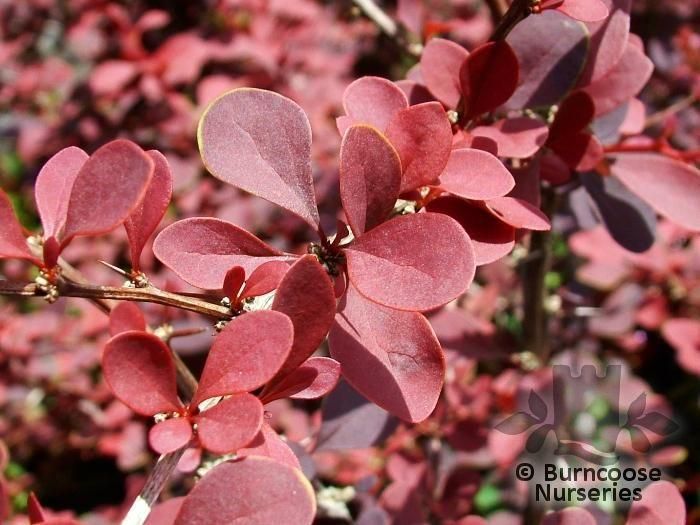BERBERIS

<




>
BERBERIS
Commonly known as Barberry
Genus of about 450 evergreen and deciduous shrubs from all parts of the northern hemishere, northern and tropical Africa and South America differing widely in form and habit from dwarf species to large garden or hedging shrubs and usually with spiny branches or spine-tipped leaves.
Barberry fruit, rich in vitamin C was used in the past to make jellies, jams and pickles.
B. vulgaris is naturalised in the UK and was much-despised and destroyed in the 19th century as it is a secondary host of wheat rust.
It is being planted to safeguard the rare Barberry Carpet moth, its sole food plant.
Full Plant Details - Sun/Soil & other attributes
-
 Good to know
Wildlife plant - birds. Vicious spines make impenetrable hedges. Plant under a bird table to keep cats at bay. Trim hedges after flowering.
Good to know
Wildlife plant - birds. Vicious spines make impenetrable hedges. Plant under a bird table to keep cats at bay. Trim hedges after flowering. -
Deciduousshrubs grown for ornamental leaves, autumn foliage, yellow-orange flowers and red or blue-black berries.
-
Evergreen
-
Coastal / windswept
-
Dwarf shrubTypically only grows to a maximum of one or two feet in height but there will be some exceptions.
-
Medium shrubTypically grow to around 4-6 feet in height
-
Tall Shrub
View Planting Tips and Care Advice
Berberis - Care Guide
Hedging - Box Alternatives

